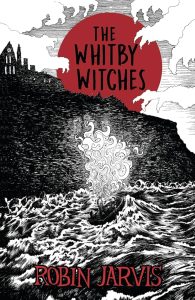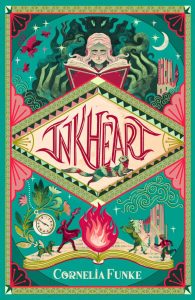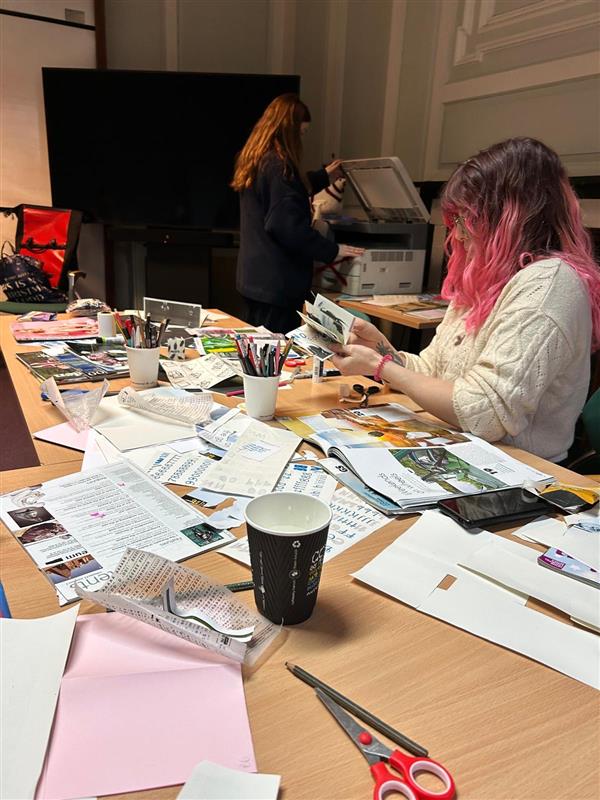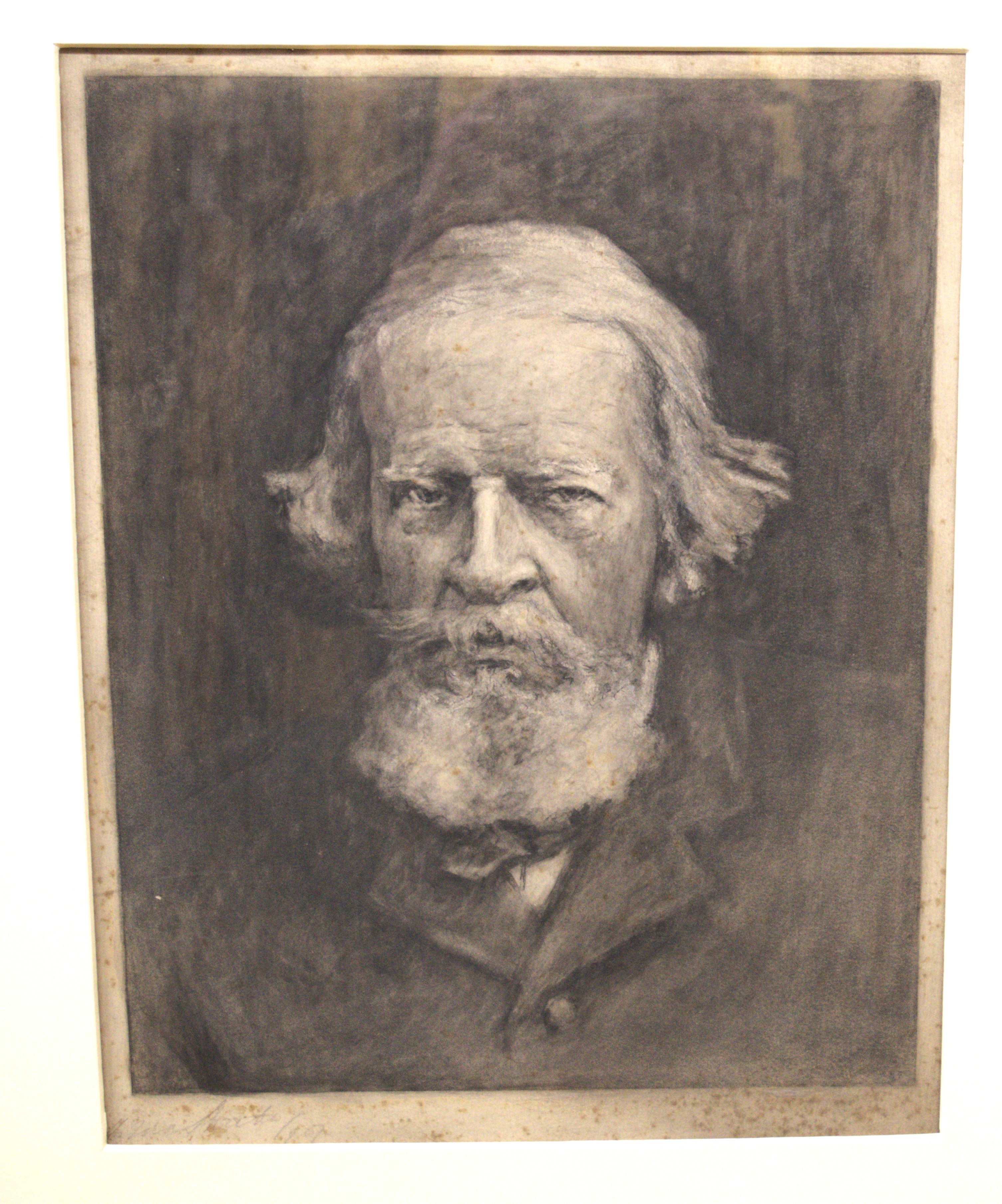While we may not be dressing up as our favourite book characters for World Book Day 2025, we have asked our Library team to tell us about the books they remember from childhood that have stayed with them.
Sarah Arkle, Deputy Librarian

I grew up in what you could most politely describe as an unconventional household, so it shouldn’t shock that the book(s) which have stayed with me most from childhood are quite weird. Robin Jarvis’ Whitby Witches trilogy is a fantasy series set in Whitby which follows two foster children, Ben and his sister Jennet as they are taken in by a benevolent witch named Mrs Boston. Ben is gifted with second sight which allows him to see the dead, as well as see and speak with a community of mythical people known as Aufwaders or Fisherfolk who live around the coast of Whitby. The trilogy follows the two children navigating their new life in Whitby as their destiny becomes embroiled with that of the Fisherfolk. They battle various enemies, good ultimately triumphs over evil. There’s a fish demon, and a snake cult. The books feature fantastic illustrations by the author. It’s all great stuff.
The series has remained with me because it is tied up with all of my happiest memories from childhood. My mum read the series to me and my older brother when we were still small enough to share bunkbeds (with matching The Simpsons bedding – it was the early 00s after all), she herself perched in a very of-the-time inflatable plastic armchair. I think being read to from an early age helped foster my love of reading, a habit I’ve maintained into adulthood, and sharing in these fantastical and weird stories together is a memory I cherish. As a family we also developed a love for the town of Whitby, eventually going on to visit a few times. Once, we even went, presumably leaving our house in Northumberland incredibly early (and me skipping school for the day), to watch the construction of the Penny Hedge – a ceremony which features in the books.
Other aspects of real Whitby architecture, heritage and folklore appear throughout the trilogy, and I delighted as a child in seeing these aspects from my beloved books in real life. I gleefully skipped up the 199 steps, counting as I went, and have – well into adulthood – made many a pilgrimage to the Whitby Museum in Pannett Park to see the Hand of Glory. (I warn you, it’s a bit gruesome.) I remember walking around the town, speculating with my mum about which houses we thought might belong to the characters and feeling so excited whenever we spotted anything we recognised from the books.
I no longer own my original copies of the novels, which I believe are now sadly out of print, but I did secure myself some second-hand copies about ten years ago in a fit of nostalgia. I’m not sure what happened to mine. I suspect, like many of my childhood books, they were at some point or another – with or without my permission – gathered up and taken to Barter Books (our local second-hand bookshop growing up) to find a new home. I hope they’ve gone on to mean as much to their next owner as they have to me.
Matt Shaw, Librarian

Perhaps the most vivid reading memory from my childhood, apart from copies of the Beano read by streetlight leaking through the curtains, is getting up as early as I could before primary school to read the one-volume edition of the JRR Tolkien’s The Lord of the Rings, published by the Book Club Associates in 1971. I remember being determined to finish it before I was eight, and the almost tactile memory of escaping into another version of the world, leaning at dawn on some swivelling Habitat chairs next to our two ginger cats, as I turned page after page of thin, smooth paper seems imprinted on my mind. Less epic, but also evoking the emotion of adventure and pastoral charm is Phillipa Pearce’s Minnow on the Say (1955), with Edward Ardizzone’s illustrations helping to tell the story of the two boys, a wooden canoe (the Minnow of the title), and a quest for Spanish treasure. I think it accounts for the inflatable kayak that I sometimes drag across Port Meadow to take my son on a much smaller adventure.
Felix Taylor, Library Assistant

One book from my childhood that had an impact on my reading life and imagination was George MacDonald’s Victorian fantasy The Princess and the Goblin, first published in 1872. It tells of the eight-year-old Princess Irene who lives alone in her father’s castle, and who one day discovers an old woman spinning in the topmost tower: her great-great-grandmother. She is then chased by the goblins, a race once banished from the king’s realm, and taken into the mines where she is rescued by a young miner boy named Curdie. I don’t remember when exactly I read it, or even if I was the one reading it, but the book opened up a pathway which led to all sorts of other routes. Most likely I had been introduced to The Hobbit at some point before MacDonald, but as Tolkien took inspiration from The Princess and the Goblin for his own mountain-dwelling orcs and goblins, I was in a familiar world, one stripped back to the simplicity and strangeness of a Germanic fairy tale full of castles, tunnels, and a magic thread that will lead you home. G. K. Chesterton called it ‘a book that has made a difference to my whole existence, which helped me to see things in a certain way from the start’. Would I go that far? I don’t know, but I understand where he’s coming from. It’s a tale of fear and heroism which has stayed with me since. I definitely read the sequel, The Princess and Curdie (1883), though I have no memory of what happens.
Lauren Ward, Assistant Librarian

A book that I adored as a child and has stayed with me is Inkheart (and in fact the whole Inkworld series) by Cornelia Funke. It’s about Meggie, who loves stories, and her father Mo, who has the ability to bring them to life – literally. Their adventures across the dangerous world they enter convey all the terrors and joys of reading, and its magical ability to transport. Inkheart and its sequels are translated from the original German, a fact I was fascinated by as a child. To my ten-year-old mind translation was reserved for more “serious” matters like textbooks and things about taxes, not fantastical stories for children’s bedtime reading, so I felt lucky to have the story in a form I could read. It sparked a lifelong appreciation for translated literature – I’m currently 56 countries into a reading challenge where I attempt to read a book from every country in the world, a project which has its roots in having read Inkheart almost two decades ago.
Header image: View of Whitby harbour from the 199 stairs down to the harbour (Credit: Gyrohype)



